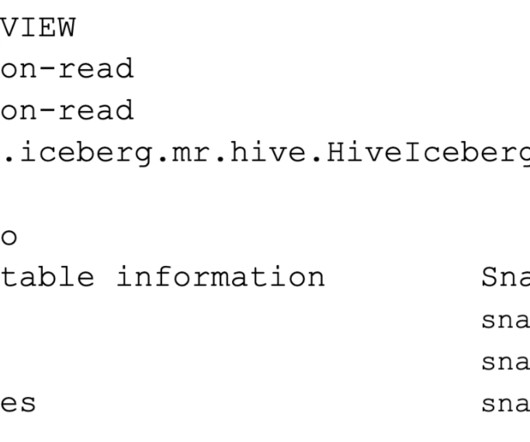Use Apache Iceberg in a data lake to support incremental data processing
AWS Big Data
MARCH 2, 2023
Apache Iceberg is an open table format for very large analytic datasets, which captures metadata information on the state of datasets as they evolve and change over time. Apache Iceberg is designed to support these features on cost-effective petabyte-scale data lakes on Amazon S3. The snapshot points to the manifest list.














Let's personalize your content